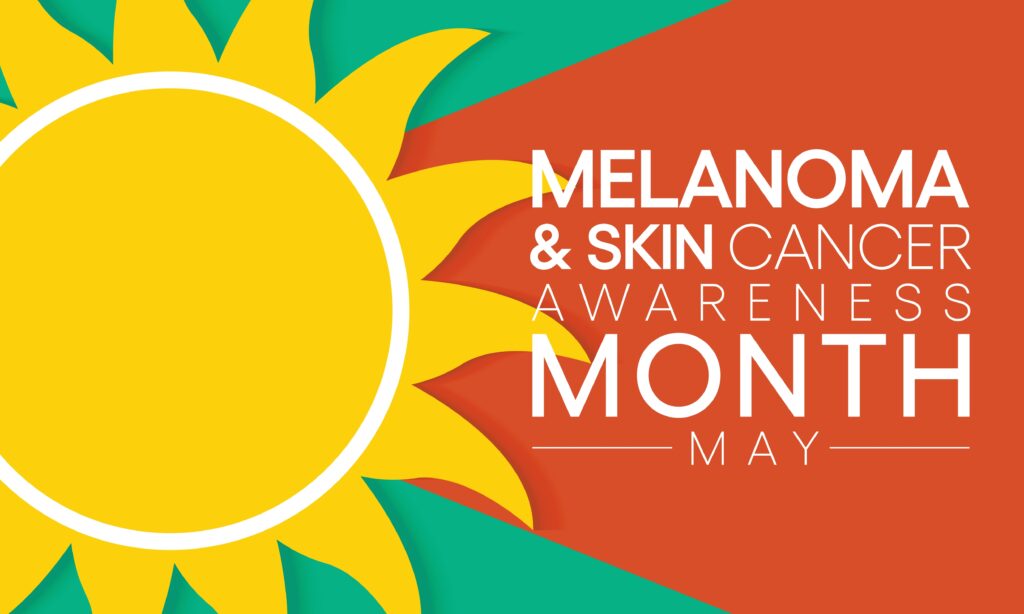De-Mystifying Moles in May for Skin Cancer Awareness Month

Everyone’s skin is as unique and different as they are. Almost all people have some moles on their body, and knowing what to look for and which ones need professional examination de-mystifies the subject of moles because any associate moles with cancer, but not all moles are cancerous. Many moles are normal, and visiting a dermatologist can confirm the type of moles on the skin and if treatment is necessary. Moles should be seen by a professional when they meet some of the criteria of a mole that could be potentially dangerous, but not every mole should send you to the dermatologist for a biopsy.
Clustering Skin Cells Form Moles
Due to the clustering of skin cells, moles appear on the skin. When skin cells spread out normally, moles will not form. Clustering can be for various reasons, such as genetics and sun exposure. Moles may appear in groups or individually, and the benefit of visiting a dermatologist for a skin cancer screening is that not all moles are visible. Although commonly seen on the neck, face, and back, some happen on the scalp, behind the ears, and other areas not visible in day-to-day activities.
Moles usually appear during childhood, and their number may increase with age. Moles will darken with sun exposure and other body changes like pregnancy. Always use sunscreen on moles when out in the sun to minimize the darkening and exposure to the sun’s fierce rays. When people are young, they are not typically concerned with moles on the body. However, as people age or moles change, people take notice and often visit a dermatologist. Remember that not all moles are cancerous or deadly; even large ones in odd shapes may be benign.
Signs of Normal Moles
One thing that most people ask is how I can tell if my moles are normal and when do I need to go visit a professional dermatologist? Because moles look different from person to person, many people never get their moles looked at by a professional. The best way to approach moles on the skin is to do self-checks and go to a licensed dermatologist if anything changes significantly or your gut is telling you to get it checked out. Here are some common signs of normal moles as a loose guideline:
- Skin colored or brown
- Smaller than the eraser on a pencil
- Round in shape
- Shape that stays consistent
- Even coloring
Moles do darken in some cases due to sun, pregnancy, and age, so a mole that darkens does not necessarily mean it is cancerous.
Signs of Moles That Should Get Checked Out
The first thing to know is that not all skin cancer comes from moles. The deadliest skin cancer is melanoma, which is found in many moles, but it is highly treatable, especially when caught and treated early. Basal and squamous cell carcinoma are more common and should not be ignored. Basal and squamous cell carcinomas, left untreated, may penetrate deep into the skin and cause health issues over time. Giving your moles the attention they deserve and watching for signs that may indicate an unhealthy mole is wise advice for all individuals.
When visiting a dermatologist, they use the ABCDE rule, measuring moles against five factors. Even when a mole does meet one of the criteria, it does not mean it is cancerous. Only a licensed dermatologist with experience can properly diagnose and treat moles.
- Inconsistent shape or appearance
- Uneven edges
- Multiple colors or shades other than brown or skin color
- Larger than ¼ inch (the size of a pencil eraser)
- Changes over time
- New moles that appear after the age of 30
- Any mole that is painful, tender, or itchy and uncomfortable
One of the most indicative things about moles that could be cancerous is when they change color, shape, or size over time. These signs indicate that the skin is evolving and changing, which needs the attention of a professional dermatologist.
Skin cancer screenings are often covered by insurance, and these head-to-toe exams regularly can put your mind at ease and ensure that any moles of concern are addressed and treated immediately. Skin cancer affects most people but is highly treatable in most cases. Early detection is key!
Mole Treatments
Treatments for moles vary, but a licensed dermatologist is able to perform complete screenings in the office and most treatments on the spot. Establishing a relationship with your local dermatologist makes it easy when moles become a concern, and you want to get them looked at by a professional. The advances in technology and the availability of mole treatments continue to improve, so addressing mole concerns may be easier than you think. There is no reason for moles to cause fear or limit your life’s activities.
If you live or work in the Atlanta area, Buckhead Dermatology’s Dr. Sherrie Straughn has helped hundreds of patients detect and treat moles over the years. She has excellent bedside manners and puts clients at ease while providing multiple mole treatment options. Call or contact us today for an appointment at 404-816-4000.
